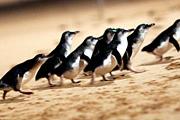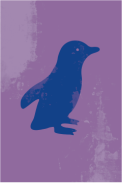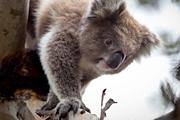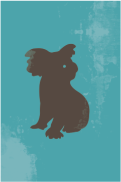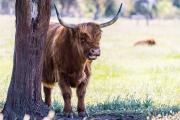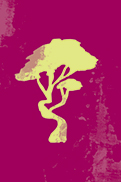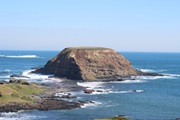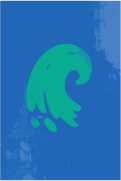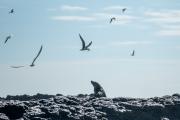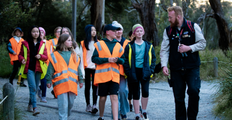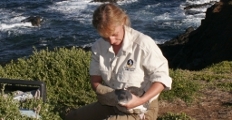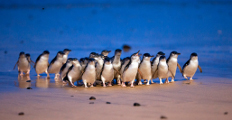Locals help Shearwater chicks depart safely from Island
The last of Phillip Island’s short-tailed shearwater chicks have taken off on their extraordinary first flight to Alaska.
A community effort ensured the fledgling seabirds had the best chance for a safe departure ahead of their 16,000km migration to the Northern Hemisphere.
Phillip Island Nature Parks Deputy Research Manager, Duncan Sutherland, said the busiest departure period for the birds was between 29 April and 7 May.
“As they learn to fly, the shearwater fledglings can be attracted to lights at night and land on roads causing a hazard for both the birds and motorists,” Dr Sutherland said.
“We saw a great response from local businesses and residents who turned off their lights and helped reduce light pollution that can place the birds in danger.”
Nature Parks rangers collected a total of 594 birds off the roads of which 408 were rescued and returned to the colony, giving them a second chance at fledging.
“Thousands of birds have been rescued since the beginning of the Shearwater Rescue Program in 1999. With the help of a grant from wildlife advocacy group, WIRES, we have been able to increase our efforts to protect the threatened migratory seabirds through habitat restoration, a strengthened rescue capability, enhanced data collection and community education for the shearwaters.”
As part of this year’s 'Dark Sky So Shearwaters Fly' campaign, Phillip Island Nature Parks partnered with Bass Coast Shire Council, Regional Roads Victoria, AusNet Services, Bunurong Land Council Aboriginal Corporation, the Victorian Ornithological Research Group, the local community and businesses.
“We thank everyone who helped to reduce light pollution, took extra care on the roads, rescued birds or helped raise awareness of the dangers for fledglings. We wish the fledglings a safe journey and look forward to welcoming the breeding adults back to the island in September,” Dr Sutherland said.
Short-tailed shearwaters migrate to Phillip Island to raise their chicks each year. In early April, the adult seabirds fly south to feed in the Southern Ocean near Antarctica, then begin the journey back to the Northern Hemisphere, leaving behind their chicks to grow ‘adult’ feathers and begin their own migration as the adults pass by Australia at the end of April and start of May.
Dr Sutherland said it had been a successful breeding season for this important marine species.
“Not all breeding seasons are successful, but this year the fledglings were in very good condition with nice weight, adult plumage and wing development. It’s an encouraging sign that the species will be here for seasons to come,” he said.
A special thank you to:
WIRES
Bass Coast Shire Council
Regional Roads Victoria
AusNet Services
Bunurong Land Council Aboriginal Corporation
Victorian Ornithological Research Group
Bass Coast Secondary College San Remo Campus
Bottle-O Surf Beach
Dar Boo Hair
Evans Quarries
First Choice Estate Agency
Fish and Chip Co Op
Grand Prix Circuit
IGA San Remo
JLA Advisory
Langford Jones
Newhaven Info Centre
Newhaven Soccer Club
Newhaven Veterinary Clinic
Phillip Island Helicopters
Rip Curl
San Remo Hotel
Shorelec
Smiths Beach Store
The Chocolate Factory
The Haven Wave Café
Victorian Desalination Plant
Vietnam Veterans Museum
Westernport Water
Woolamai Tavern





